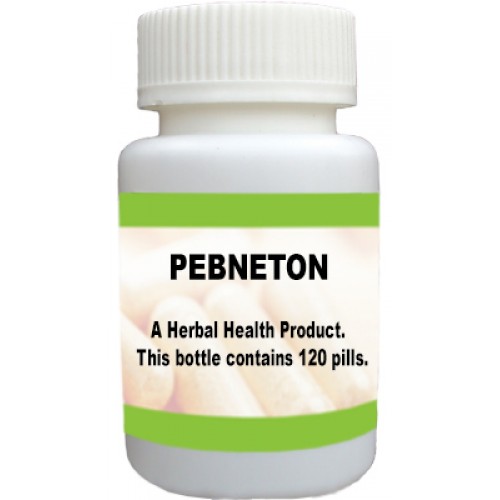10 Secret Tips to Soothe Bell’s Palsy Eye Treatment Discomforts

Bell’s palsy eye treatment can be an uncomfortable experience. But don’t despair! We have some tried and tested tips that can help make the process a little more bearable. 10 secret tips to soothe Bell’s palsy eye treatment discomforts. From simple lifestyle changes to clever home remedies, we have all the advice you need to keep the discomfort to a minimum. Read on to find out more!
Understanding Bell’s Palsy and its Effects on the Eyes
Bell’s Palsy is a condition that affects the facial muscles, including those responsible for controlling eye movement and blinking. This can lead to various eye problems, such as dryness, excessive tearing, and difficulty closing the eye fully.
When the eye cannot close properly, it becomes susceptible to dryness, which can cause irritation, redness, and discomfort. Additionally, the inability to blink effectively can lead to inadequate lubrication of the cornea, potentially leading to corneal abrasions or infections.
Understanding the effects of Bell’s Palsy on the eyes is crucial for effective treatment and management. It is essential to protect the eye from external irritants, such as wind or dust, by using protective eyewear. Additionally, lubricating eye drops and ointments can help relieve dryness and keep the eye moist.
In some cases, certain herbs and supplements may also be beneficial in improving nerve function and reducing inflammation associated with Bell’s Palsy. However, it is important to consult with a healthcare professional before incorporating any herbal remedies or supplements into your treatment plan.
By understanding the specific effects of Bell’s Palsy on the eyes, you can better manage the discomfort and protect your eye health during the recovery process.
Common Eye Problems Associated with Bell’s Palsy
When Bell’s Palsy affects the eyes, it can result in a range of common eye problems that can cause discomfort and frustration. One of the most common issues is dryness. Since the eye may not close fully or blink properly, it becomes vulnerable to dryness, leading to irritation and redness. Excessive tearing can also occur due to an inability to regulate tears effectively.
In addition to these problems, the risk of corneal abrasions or infections increases when the eye cannot blink adequately. It’s important to understand that the eyes need extra care during Bell’s Palsy eye treatment. Utilizing protective eyewear can shield the eyes from irritants such as wind and dust. Using lubricating eye drops or ointments can also help alleviate dryness and maintain moisture in the eyes.
Some people have found that certain herbs and supplements can be beneficial in improving nerve function and reducing inflammation associated with Bell’s Palsy. However, it’s crucial to consult with a healthcare professional before incorporating any herbal remedies or supplements into your treatment plan. By being aware of these common eye problems, you can take the necessary steps to minimize discomfort and promote healing during your Bell’s Palsy eye treatment.
How to Alleviate Discomfort and Pain in the Eye
Dealing with discomfort and pain in the eye during Bell’s palsy eye treatment can be incredibly frustrating. But don’t worry, there are several strategies you can try to alleviate these symptoms and make the process a little more bearable.
One approach is to incorporate natural remedies such as herbs for Bell’s palsy into your treatment plan. Certain herbs, such as St. John’s Wort or turmeric, have anti-inflammatory properties that may help reduce swelling and discomfort in the eye. However, it’s essential to consult with a healthcare professional before adding any herbs or supplements to your regimen.
Additionally, gentle eye massages can be effective in relieving pain and promoting blood circulation to the affected area. Use your fingertips to gently massage around the eye socket in a circular motion, focusing on areas of tension and tightness.
Lastly, ensuring that your eye stays properly lubricated is crucial for reducing discomfort. Using artificial tears or lubricating eye drops recommended by your healthcare provider can help alleviate dryness and provide temporary relief.
By trying out these strategies, you can find some relief from the discomfort and pain associated with Bell’s palsy eye treatment. Remember to always consult with a healthcare professional before trying any new treatments or remedies.
Simple Exercises to Improve Eye Muscle Function
Simple exercises can be incredibly beneficial for improving eye muscle function during Bell’s palsy eye treatment. These exercises are easy to do and can help strengthen the muscles around the eye, promote blood circulation, and improve overall eye mobility.
One exercise to try is eye rolling. Start by looking straight ahead and then slowly roll your eyes in a circular motion, both clockwise and counterclockwise. This movement helps stimulate the eye muscles and can enhance flexibility.
Another exercise is blinking exercises. Blink rapidly for a few seconds and then relax. Repeat this several times throughout the day. These exercises can help strengthen the eyelid muscles and improve blinking ability.
Additionally, focusing exercises can be beneficial. Hold a pen or finger about an arm’s length away from your face and focus on it. Then, slowly bring it closer to your face while keeping it in focus. Repeat this several times to help improve eye coordination.
Remember to always consult with a healthcare professional before starting any new exercise routine or incorporating any herbs for Bell’s palsy or supplements for Bell’s palsy into your treatment plan.
Essential Eye Drops and Ointments for Bell’s Palsy Eye Treatment
When it comes to treating Bell’s Palsy in the eyes, essential eye drops and ointments can be incredibly beneficial. These products are designed to alleviate dryness, reduce irritation, and provide much-needed moisture to the eyes.
Artificial tears are a common type of eye drop that can help lubricate the eyes and relieve discomfort. These drops mimic the natural tears produced by the eyes, providing temporary relief from dryness and irritation.
Lubricating ointments are another option for Bell’s Palsy eye treatment. These thicker formulas provide longer-lasting moisture and protection for the eyes. They can be especially helpful at night, when the eyes tend to dry out more easily.
In addition to these standard options, there are also specific eye drops and ointments available that are formulated to address the unique needs of Bell’s Palsy patients. Some contain ingredients that promote nerve regeneration and reduce inflammation, such as certain Herbs For Bell’s Palsy or supplements for Bell’s Palsy. However, it’s important to consult with a healthcare professional before incorporating these into your treatment plan.
By using essential eye drops and ointments specifically designed for Bell’s Palsy, you can effectively manage dryness, irritation, and discomfort, promoting healing and comfort during your recovery journey.
Dietary Recommendations for Improved Eye Health
Proper nutrition plays a crucial role in maintaining overall eye health, especially during Bell’s Palsy eye treatment. By incorporating certain dietary recommendations, you can promote healing and improve the condition of your eyes.
One important aspect is consuming foods rich in antioxidants, such as fruits and vegetables. Antioxidants help protect the eyes from damage caused by free radicals, which can contribute to inflammation and oxidative stress. Include colorful fruits and vegetables like spinach, carrots, and berries in your diet to provide your eyes with the nutrients they need.
Omega-3 fatty acids are another essential nutrient for eye health. Found in fatty fish like salmon and mackerel, as well as in flaxseeds and chia seeds, these fatty acids can reduce inflammation and promote optimal eye function.
In addition to a well-balanced diet, certain Supplements For Bell’s Palsy may be beneficial in improving nerve function and reducing inflammation. Consult with a healthcare professional to determine if any supplements are suitable for you and your specific condition.
Remember, maintaining a healthy diet is a valuable way to support your eye health and aid in the recovery process during Bell’s Palsy eye treatment.
Natural Remedies to Relieve Inflammation and Reduce Swelling
Dealing with inflammation and swelling in the eye during Bell’s palsy eye treatment can be incredibly uncomfortable. Luckily, there are some natural remedies that can help provide relief. One effective remedy is using a warm compress on the affected eye. Applying a warm compress for about 10-15 minutes a few times a day can help reduce inflammation and promote blood circulation, providing soothing relief.
Another natural remedy to consider is chamomile tea. Brew a cup of chamomile tea, let it cool, and then soak a clean cloth in the tea. Place the cloth over the affected eye for a few minutes. Chamomile has anti-inflammatory properties that can help reduce swelling and irritation.
Additionally, incorporating anti-inflammatory foods into your diet can also have a positive effect. Foods such as turmeric, ginger, and leafy green vegetables are known for their anti-inflammatory properties and can help reduce swelling.
While natural remedies can be beneficial, it’s important to consult with a healthcare professional before trying any new treatments. They can provide personalized guidance and ensure that these remedies are safe and suitable for your specific condition.
Eye Protection Tips during Recovery from Bell’s Palsy
During the recovery process from Bell’s Palsy, it’s essential to prioritize eye protection to ensure optimal healing and prevent further complications. Here are some eye protection tips to keep in mind:
- Wear protective eyewear: Shield your eyes from potential irritants such as wind, dust, and bright lights by wearing protective glasses or sunglasses. This will help prevent dryness, discomfort, and potential damage to the eyes.
- Use a patch or eye shield: If your eye is unable to fully close, consider using an eye patch or eye shield at night to protect it from inadvertent rubbing or exposure. This can prevent corneal abrasions and infections.
- Avoid eye strain: Reduce the strain on your eyes by taking regular breaks from activities that require prolonged focus, such as reading or using digital devices. Give your eyes frequent rest periods to prevent fatigue and discomfort.
- Keep the eye area clean: Clean the area around your eyes regularly with a gentle, non-irritating cleanser to remove any debris or bacteria that could potentially cause infection.
- Follow your healthcare provider’s instructions: It’s crucial to follow the advice and instructions given by your healthcare provider regarding your eye care and protection. They will provide personalized guidance and recommendations based on your specific condition.
By implementing these eye protection tips, you can ensure a smoother recovery process and promote optimal eye health during your Bell’s Palsy treatment.
Importance of Proper Eye Care and Regular Checkups after Bell’s Palsy
Proper eye care and regular checkups are crucial after Bell’s Palsy to ensure long-term eye health and prevent future issues. While the acute symptoms of Bell’s Palsy may improve over time, it’s important to continue taking care of your eyes to prevent complications and maintain optimal vision.
Regular eye checkups with an ophthalmologist or optometrist are essential to monitor any changes in your eye health and ensure early detection of any potential issues. These checkups can help identify dryness, corneal abnormalities, or other eye conditions that may arise as a result of Bell’s Palsy.
In addition to regular checkups, practicing good eye care habits is key. This includes protecting your eyes from irritants such as wind, dust, and bright lights by wearing protective eyewear. It’s also important to maintain proper eye hygiene by keeping the eye area clean and avoiding rubbing or touching your eyes excessively.
By prioritizing proper eye care and scheduling regular checkups, you can effectively manage your eye health and prevent any future complications after Bell’s Palsy. Remember, your eyes are precious, and taking care of them is essential for maintaining your overall well-being.
Tips for Maintaining Eye Health and Preventing Future Issues
To maintain eye health and prevent future issues after Bell’s Palsy, it’s important to follow a few simple tips. Firstly, make sure to prioritize proper eye care, such as wearing protective eyewear in environments that could potentially irritate or harm your eyes. Additionally, practice good eye hygiene by keeping the eye area clean and avoiding excessive rubbing or touching. Regular eye checkups with an ophthalmologist or optometrist are also crucial for monitoring any changes in your eye health and catching potential issues early on. Finally, don’t forget about the importance of a healthy diet and lifestyle. Eating a balanced diet rich in antioxidants and omega-3 fatty acids can promote optimal eye function and overall well-being. By following these tips, you can maintain good eye health and reduce the risk of future complications after Bell’s Palsy.
Other Related Article:





